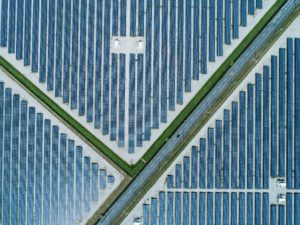
- On September 8, 2021, the Biden Administration’s Energy Department released a “Solar Futures Study Providing the Blueprint for a Zero-Carbon Grid.” Among other things, this study notes that solar energy can “power 40% of the nation’s electricity, drive deep decarbonization of the grid, and employ as much as 1.5 million people—without raising electricity prices.[1]”
- This announcement is aspirational in nature, a stretch goal, it is not a mandate, it is not a new regulation, and it is not legislation.
- The job of the Executive branch of the federal government is, well, executing laws, not making them. Nonetheless, the executive can propose legislation in its dialog with Congress.
- The Infrastructure and Jobs Bill got bipartisan support in the Senate because it established policy objectives not policy solutions. A policy objective would be “zero carbon” or “99.9% reliability,” while a policy solution would be “40% of electricity must be generated from solar and 30% from wind.”
- The other confusion created by an announcement like this is that it ignores our federalist system of government – controlled by two levels of government – state and federal. U.S. electricity is primarily regulated at the state level and over half of U.S. power is generated by monopoly utilities regulated by state public utility commissions, not the federal government. The rest is mostly generated by privately-owned businesses that sell their electricity through the poles and wires of the state-regulated monopolies.
- While over 35 states have either clean energy standards or renewable power requirements, no such mandate exists at the federal level unless, and until, the U.S. Congress passes legislation.[2]
- The state of California, as we have discussed extensively, has renewable and clean energy mandates that legislate solutions rather than outcomes. Their approach is also full of stretch goals but it has sacrificed reliability and has been a big contributor to California having among the highest electricity prices in the country.
- These issues notwithstanding, we believe the sheer amount of infrastructure (think high voltage transmission) that would be needed to “solarize” the cloudy northeastern U.S. with sunshine from the south and southwest is impossible without major changes to our interstate permitting laws and regulations (see above bullet on federalist system).
- Implementing and funding this kind of nationwide mandate requires new legislation passed by Congress, cooperation with and between states and likely some tax incentives to grease the skids. And even then, we believe that mandating solutions would still be bad policy.
- We note that the far less ambitious infrastructure bill that recently passed in the Senate with rare bipartisan support (because it mandates outcomes rather than solutions and depends primarily on private capital) has yet to reach the President for signature.
Network gas and power utilities sit at the center of the energy system, and we believe are well-positioned to help drive a transition to lower-carbon energy with private capital. What’s needed from the federal government is clearly defined policies that dictate outcomes so the engineers and the capital markets can achieve them. If solar is the best path forward because it is a better technology (cheaper and more reliable), then let it compete. We think technology agnostic policy objectives offer a lot more opportunity for innovation and breakthroughs than mandates.
DOE press release:
Summary of study:
https://www.energy.gov/eere/solar/solar-futures-study
National Renewable Energy Laboratory (NREL) full report:
https://www.energy.gov/sites/default/files/2021-09/Solar%20Futures%20Study.pdf
[1] https://www.energy.gov/articles/doe-releases-solar-futures-study-providing-blueprint-zero-carbon-grid
[2] DSIRE—North Carolina Clean Energy Technology Center.
The Information provided in this article is believed to be accurate as of the date above. EIP reserves the right to update, modify or change information without notice. Any statements of opinion are EIP’s opinion and should not be relied upon as a prediction of any future event. The information is based on data obtained from third party publicly available sources that EIP believes to be reliable but EIP has not independently verified and cannot warrant the accuracy of such information. Investors are encouraged to seek their own legal, tax, or other advice before investing.